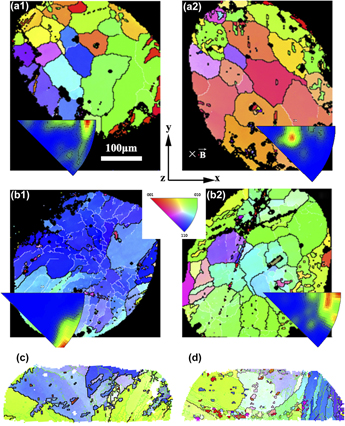Article contents
Magnetic-field induced anisotropy in electromigration behavior of Sn–Ag–Cu solder interconnects
Published online by Cambridge University Press: 13 April 2015
Abstract

Sn–Ag–Cu solder interconnects were made by solidifying the solder balls in a magnetic field and subsequently tested for their electromigration behavior. The orientation of the tin grains was analyzed by electron backscattered diffraction. It was found that the c-axis of Sn grain tended to rotate away from the direction of the magnetic field during solidification, resulting in an enhanced electromigration resistance for the solder joint when the current was applied along the direction of the magnetic field, as evidenced by a smaller electromigration-induced polarity effect in the growth of the interfacial intermetallic compound. Such a reduced polarity-effect of electromigration is shown to agree well with the anisotropy in the diffusivity of the active diffusion species, Cu, in the tetragonal Sn. The difference of free energy change caused by the anisotropy in the magnetic susceptibility of the tetragonal Sn during solidification is suggested to be the main factor for this phenomenon.
- Type
- Articles
- Information
- Copyright
- Copyright © Materials Research Society 2015
References
REFERENCES
- 10
- Cited by


